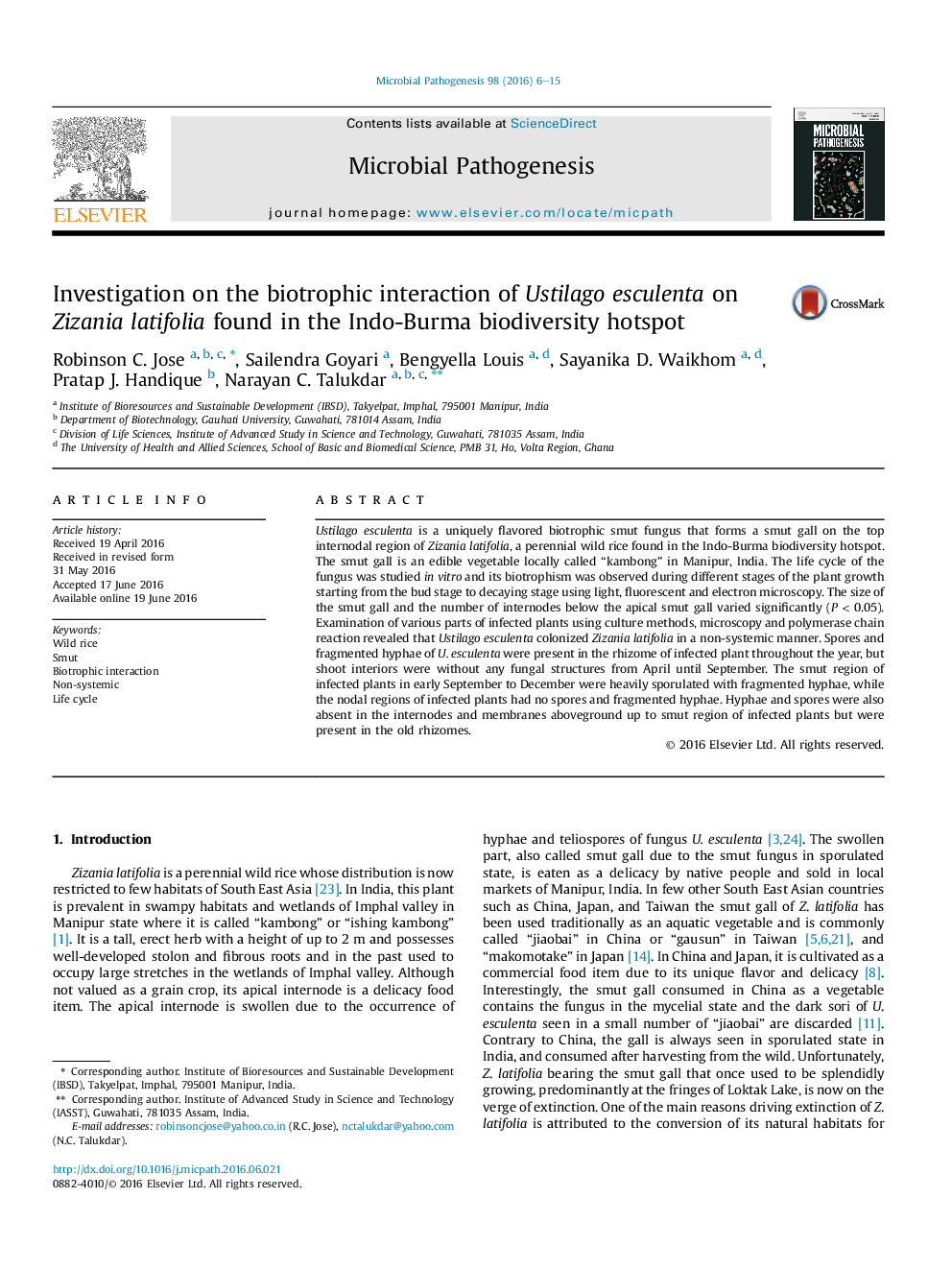| کد مقاله | کد نشریه | سال انتشار | مقاله انگلیسی | نسخه تمام متن |
|---|---|---|---|---|
| 3416377 | 1593691 | 2016 | 10 صفحه PDF | دانلود رایگان |

• There exists morphological diversity in swollen culm tip developed in Zizania latifolia following colonization by Ustilago esculenta.
• Ustilago esculenta colonizes Zizania latifolia in a non-systemic manner.
• Deciphered the accurate stages in the life cycle of the fungus under in vitro condition.
• Described the mode of survival, infection and spread of the fungus in the host.
Ustilago esculenta is a uniquely flavored biotrophic smut fungus that forms a smut gall on the top internodal region of Zizania latifolia, a perennial wild rice found in the Indo-Burma biodiversity hotspot. The smut gall is an edible vegetable locally called “kambong” in Manipur, India. The life cycle of the fungus was studied in vitro and its biotrophism was observed during different stages of the plant growth starting from the bud stage to decaying stage using light, fluorescent and electron microscopy. The size of the smut gall and the number of internodes below the apical smut gall varied significantly (P < 0.05). Examination of various parts of infected plants using culture methods, microscopy and polymerase chain reaction revealed that Ustilago esculenta colonized Zizania latifolia in a non-systemic manner. Spores and fragmented hyphae of U. esculenta were present in the rhizome of infected plant throughout the year, but shoot interiors were without any fungal structures from April until September. The smut region of infected plants in early September to December were heavily sporulated with fragmented hyphae, while the nodal regions of infected plants had no spores and fragmented hyphae. Hyphae and spores were also absent in the internodes and membranes aboveground up to smut region of infected plants but were present in the old rhizomes.
Journal: Microbial Pathogenesis - Volume 98, September 2016, Pages 6–15